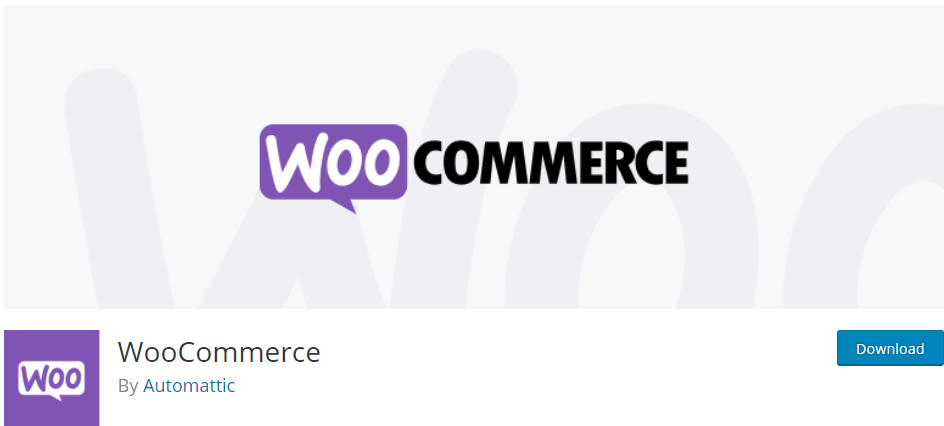Laravel Recaptcha Validation
Read more at https://www.phpclasses.org/package/12015-PHP-Validate-human-users-using-Recaptcha-API.html#2021-03-16-17:41:31
Latest PECL Releases:
For a complete list of changes see: https://github.com/php-amqp/php-amqp/compare/v1.10.2...v1.11.0beta
Designers love to complain about ‘superficial’ design trends that they don’t feel have any staying power or contribute anything meaningful to the industry. But are they right?
I happen to think that whatever users find ‘trendy’ or cool, even though it may be fleeting, is part of the service a designer provides. It’s part of what clients are paying for. If you’re offering classic, outdated solutions that nobody wants, you are only hurting your own career.
Yes, it might be annoying to feel you must bend to the whims of the ‘masses,’ but if those masses are looking for something you can’t give them, they aren’t going to pay you.
Adopting visual trends is simply a part of providing a commercial service. The only way you can really subvert a design trend is by creating one of your own, which allows you to be the thought leader and influence other designers to follow your lead instead. This is extremely difficult to do, however, and the vast majority of designers are followers rather than leaders.

Don’t believe me? Just look at the designs for tablets and smartphones both before and after the release of the iPad and iPhone. Those designs were so influential that they virtually eliminated any design possibility other than sleek, thin, and black (or white).

Mobile Phones Before the iPhone [Image Source]
Yes, people are quick to jump all over a new trend, causing it to look dated in a matter of months. But, like it or not, that’s the nature of the industry these days. Ideas spread much faster than they used to, thanks to the internet. Which means that designers and clients alike are exposed to new trends constantly.
But how do you stay abreast of new trends while not running around like a headless chicken, trying to adapt to every new trend you think might get you more clients? There are three ways you can go about it, which I will explain.
You can use the constant influx of new trends to your advantage as a designer, adjusting your personal style to fit the range of what clients may be looking for depending on which corner of the web they approach you from. I call this the ‘puzzle piece’ approach – you have the missing piece of the puzzle for every design project you take on.
This isn’t a bad way to do business as a freelancer if you don’t mind the constant switching and adapting. You probably won’t gain the venerable reputation of someone who sticks to their guns, but if you can continue to ride the wave and know just when and how to adapt, you’ll have a long career ahead of you.

On the other hand, you may wish to develop a reputation for creating work that always bears your personal mark or style. You buck any and all new trends, and only serve clients who are looking for exactly the type of design work you specialize in.
This is a great way to build a solid, loyal client base and following, but there can be dangers here as well. You may find your base getting smaller and smaller as people’s attention is drawn to newer, more exciting trends.

Saul Bass Quote, Designed by Brittany Appel
Personally, I think the ideal approach lies somewhere in the middle. If you’re too much of a trend hopper, you’ll have no credibility as a designer. However, if you’re too absorbed in your personal style preferences, you’ll alienate too large a portion of your potential market.
Don’t get me wrong – I’m the biggest believer in niching down your potential pool of clients. But you don’t want to go so niche that you’re unable to grow and expand your career.
The post Do We Really Need to Follow Design Trends? appeared first on Speckyboy Design Magazine.
The formerly-commercial DarkBASIC Professional, now free and open source, has been added to the Free BASIC Compilers and Interpreters page. If you are interested in writing computer games in the BASIC programming language, or any other type of program for that matter, check it out.
There’s nothing like 20/20 vision but unfortunately, cameras still aren’t able to magically transport viewers into the world of our photos. In order to get there, we need editing. There’s a good reason why it’s said that a picture is worth a thousand words. You can tell an entire story without writing a single line.
Normally, photographers use Adobe Lightroom to give their photos that extra oomph, or to convey a specific atmosphere they felt while on the location. But it’s tricky. Often, it includes countless hours of tweaking the settings and then reapplying the effects to every photo in the set. And if you’re shooting nature or specific subjects that you want to be displayed in high definition, you have to keep an eye on settings throughout the process.
Or you can simply use these Lightroom presets for adding the HDR effect to your photos. Snapping pics with your phone and forgot to turn on the HDR mode? No problem. You were shooting in HDR but don’t like the results? Easy peasy! These Lightroom presets will help you strike the perfect balance between highlights and shadows. They will sharpen and give structure to your images so that every detail stands out, and you can truly transport your viewers, clients, and/or followers into that magical moment.
Bring light (and attention) to every corner of your photos with these 10 HDR Lightroom presets. You’ll get various presets for enhancing your photos, no matter the camera settings, and creating gorgeous effects. From natural presets, to punchy and surrealist presets, you’ll get the full package!

If HDR is your go-to photography style, this collection is exactly what you need! Featuring 20 high-quality HDR presets for Lightroom, you can use this preset collection for a variety of shoots. They work great for a variety of photos and conditions, and bring out the best in your shots.

Get HDR shots, no matter the weather. This professional collection of Lightroom presets for adding HDR effects to your photos easily adapts to different weather and shooting conditions, and guarantees smooth and structured results. You’ll get 11 presets that you can fine tune to achieve the desired effects.

HDR for landscape is easy, but what about portrait and lifestyle HDR? Not a problem with this HDR Lightroom preset collection. Featuring 50 HDR presets, this collection is great for adding natural brightness to your photos, and making sure that every detail is clear. Edit your way to absolute perfection!

Get professional and authentic shots with these 14 HDR Lightroom presets. They’re perfect for pro photography, as well as blogs, social media, and marketing materials. You can easily fine tune the presets to achieve the desired effects, and then apply them to all the photos in your set.

Bring out the details beautifully and subtly with this collection of 8 professional HDR presets for Lightroom. These 8 HDR presets enhance the beauty of your photos, but give you subtle and natural results that are perfect for portfolios, magazines, social media, and more! Let’s amaze your audience!

Create a unique atmosphere with this faded HDR Lightroom effect. Perfect for portrait and fashion photography, as well as lifestyle and landscape shots that convey a special atmosphere, this preset is a stellar and professional option. It’s easy to use, and corrects everything to give you beautiful photos.

Get stunning and highly-detailed results with these professional and premium Lightroom presets that will give your photos the HDR effect. The collection consists of 5 presets that you can easily customize to achieve the desired effect in line with your unique style. Bring out the details – and the applause!

Perfect for product and professional photography, these HDR Lightroom presets are a stellar choice. You’ll get a high dynamic range with these 20 presets that leverage micro contrast to provide you with detailed photos that contain none of the elements destructive to aesthetics such as halos and noise.

Bring the atmosphere of the shot a little closer to your viewers, clients, and followers with these 15 HDR Lightroom presets. Perfect for professional landscape, lifestyle, travel, and nature photography, these presets are highly customizable and incredibly easy to use. You’ll get beautiful results with half the work!

Breathe fresh life into your photos! Perfect for graphic designers and professional photographers, these premium HDR Lightroom presets offer 15 options to enhance the details in your photos, and correct wrong exposure and imperfect shooting conditions. From smooth to dramatic, there are plenty of gorgeous HDR effects to work with.

Add vibrancy and dynamism to your photos with this HDR Lightroom preset collection! This collection offers 20 professional presets that will add the HDR effect to your standard photos. It’s perfect for urban, nature, travel, and other types of photography where you want to convey an authentic atmosphere.

Get better-looking photos with these HDR Lightroom presets! Forget about underexposed (or overexposed) photos that don’t show the details making up the whole atmosphere. And while you’re at it, make some room in your calendar because you won’t be wasting days trying to get the perfect results anymore.
With these Lightroom presets, the world of gorgeous HDR shots is at your fingertips. All you have to do is download the HDR preset you’ve been eyeing, apply it to your photos, and presto! You’ve got yourself a gorgeous shot!
No matter if you plan on showing your photos in an exhibit, magazine, or on social media, these presets will enhance their details. Now, we’re not saying they’ll instantly launch you into stardom, but hey! You know that every good photographer swears by their presets.
The post The 12 Best Lightroom Presets for Adding the HDR Effect to Your Photos appeared first on Speckyboy Design Magazine.
In this episode, Josepha Haden Chomphosy explores the WordPress release process. Tune in and learn the phases of a release and catch this week’s small list of big things.
Have a question you’d like answered? You can submit them to wpbriefing@wordpress.org, either written or as a voice recording.
Hello, everyone, and welcome to the WordPress briefing, the podcast where you can catch quick explanations of some of the ideas behind the WordPress open source project and the community around it, as well as get a small list of big things coming up in the next two weeks. I’m your host, Josepha Haden Chomphosy. Here we go!
All right, so last week, we wrapped up and shipped the WordPress 5.7 release. The release team this time around was smaller than we’ve had in the last couple of years. By the numbers, it looks really good: 66 enhancements or feature requests went in, 127 bugs were fixed, and seven versions of a Gutenberg plugin were merged and backported. If you use WordPress, you are probably aware that we have new releases throughout the year, but you probably don’t know much about the release process. There’s not really a reason to know unless you’re actively contributing to a release. For those interested in knowing more about how we improve WordPress, this week’s exploration is for you.
We’re gonna take a look at what goes into WordPress releases and just kind of zoom our way in from the highest level. At the highest level, there are three major WordPress releases a year, plus the minor releases, plus Gutenberg releases. So if you’re following current WordPress work and future WordPress work, that’s going to get you to probably around 30 releases a year. If we zoom in one level to the release itself, a single release of WordPress takes four to five months from start to the day that we ship, and an additional four to six weeks on support and translations, and minor releases after that. If you’re looking from my vantage point, you’ll see that WordPress releases have essentially five parts, some of which happen kind of simultaneously.
The first part is planning and includes the project lead, lead developers, design; groups like that. The second phase is the creation phase when we’re actually building the things that have to go into the CMS that involves the design, core, editor, mobile, and other teams. Then there’s this phase that I like to refer to as the distribution phase. This is mostly done by the teams that make sure that WordPress is widely distributable; the polyglots team work on translations, accessibility does some work, docs make sure that everything is documented, and training, of course, gets things ready for when we have to be able to tell people how to use the release.
Then there is the fourth phase; I really don’t think they go sequentially or in a waterfall format. The fourth-ish phase that I include, and that I tend to see, is this extending and iteration phase. It’s the phase where we see our theme authors and our plugin authors, folks who are doing support, show up and help us to make sure that WordPress is available not only widely but broadly to ensure that their audiences as theme authors and plugin authors are covered in the features that they need based on what they are using WordPress for. The fifth phase is the part of our communication that involves the community team, especially marketing, WordPressTV, and learn.wordpress.org. Basically, anyone who’s showing up to make sure that we all share what happened in the release, the features that are coming, and how that affects the users is involved in that particular phase. So five big phases of what happens over those four to five months, and then for the month or month and a half afterward.
If we zoom in a bit more on the creation phase, each release has people who lead the work and coordinate contributor efforts during the course of the release. For any given release, hundreds of people contribute and receive credit for moving the WordPress project forward. Okay, hold on a second. Let’s pump the brakes and zoom in a bit on that. Hundreds of people work on every major release for a project that powers over 40% of the web that feels like a small number. But for the people who process the contributions in preparation for release, it’s actually pretty substantial. For every release, there is a small team of leaders who asked the hard questions. Is this a usable feature? Does this make WordPress better overall? And, of course, is this ready to ship? Some of those leaders, a smaller subset of even the leaders that we have already, are committers who actually prep and merge patches to the CMS; they don’t do all the work to create a design or write all the code. This tiny group of people processes hundreds and hundreds of bug fixes, improvements, and enhancements that have been submitted over the course of months and sometimes years. As a side note, that whole process is a little smaller, a little faster in the Gutenberg featured plugin, but the basic parts are still there. Alright, so we’ve zoomed from the big picture way into some of the finer details, and it really looks like any other project cycle. So now, I’m going to layer in the filter of open source to that process.
There are a couple of things that make building software in an open source environment so different. The first is that the code is readily available. If you have a basic understanding of the languages, you can see the code, learn from it, and make suggestions about improving it. Second, you consider the user a co-developer in the process, which means that as long as people use your product, they will have opinions on what you shipped. This way of iterating improves WordPress and ties back to one of my favorite open source principles. The idea that with many eyes, all bugs are shallow. To me, that means that with enough people looking at a problem, someone is bound to be able to see the solution.
This brings us to our community highlight, the segment where I share a note about contributors who have helped others along the way or a WordPress success story. This week’s highlight is from Nok in our Bangkok community. When asked to help her find her way into the WordPress community, she said, “@shinichiN who started the WordPress community in Bangkok and encouraged me to contribute, and also @mayukojpn has introduced me to the WP community team to join as a deputy. “ Thank you for sharing those two inspiring people with us. And if you, listener, have any stories that you would like to share of your own WordPress success or people that you have been so grateful to help you find your way in the project, you can feel free to email those to me at wpbriefing@wordpress.org.
That brings us to our final segment of the WP Briefing, the small list of big things. I only have three things to share with you this week. The first one is that about a week ago, we had our first release of 2021. It was the WordPress 5.7 release, titled Esperanza. If you have not yet seen it, go ahead and update your website or check with your host and make sure that they have updated you if you’re on a managed host. And then take a listen to the artists that it’s named after.
The second thing that I want you to keep an eye out for is wordpress.org/news. We are starting a new series of content that gets at the heart of some of Gutenberg’s basic parts; there’s a lot of change coming up in the next few releases of WordPress. And the most important thing to me is that you understand what we’re trying to change and where those changes are primarily taking place. There will be a couple of tutorials that go up there over the course of the of the next few weeks. The third item on the small list of big things is to remind you of our call for testing. As I mentioned earlier in the podcast, the users of any open source software are the code developers; the software built is supposed to make your life and work easier. When you test things and find interactions that can use a little bit of refinement or features that are not working exactly as expected, it’s incredibly helpful for us to have that information to always make sure that we’re solving problems instead of accidentally creating them. If you want to participate in the Current call for testing, you can head over to make.wordpress.org/test. Or, if you’ve been doing your own testing, you can also submit any bugs you have found in the GitHub repo, which I will share in the show notes below. So that, my friends, is your small list of big things. Thank you for tuning in today for the WordPress briefing. I’m your host, Josepha Haden Chomphosy. I’ll see you again in a couple of weeks!
Louis wants to build a website for his business so he can sell his products online. He searches around for the best website builders in hopes of finding one that’s ecommerce friendly. He comes across WordPress and wonders, “Is WordPress good for ecommerce?”
If you have the same question as Louis, you’re in the right place — we’re here to answer that question.
Keep reading to get answers to questions like:

For even more digital marketing advice, sign up for the email that more than 150,000 other marketers trust: Revenue Weekly.
When you look at WordPress, you may wonder, “Can WordPress be used for ecommerce?
The answer? Yes.
But the real question of the hour is this: Is WordPress good for ecommerce?
The answer? It can be.
Whether WordPress is right for ecommerce depends upon your business and your needs. For some businesses, WordPress is a great solution for selling products online. For other companies, WordPress falls short of expectations and requirements, making it a less ideal solution.
To help you decide if a WordPress ecommerce site is best for your business, let’s look at some pros and cons of building your ecommerce site on WordPress.
WordPress can be used for ecommerce and offers numerous great benefits. Here are a few of the pros of using WordPress for your business:
The cornerstone of building a WordPress site is plugins. Plugins help you craft a site that has all the functionality you need for your business. If you want to have an ecommerce site, WordPress offers numerous ecommerce-focused plugins to help you sell products on your site.
One of WordPress’s most popular ecommerce plugins is WooCommerce. WooCommerce enables you to:

This ecommerce plugin offers tons of great features to help you turn a WordPress site into an ecommerce store.
There are dozens of other plugins you can use to shape up your ecommerce store, including:
Using plugins enables you to pick and choose the functionalities you need for your site. It can benefit your business because it allows you to simplify the process of building your site.
One of the most significant benefits of WordPress is the sheer number of templates they offer for building your site. If you want an ecommerce site that encapsulates your brand’s unique style, WordPress offers a template for it.
WordPress has over 8,000 themes to choose from for your site, with over 1,200 ecommerce-focused templates you can use to build your site.

With so many options available, you can build a custom site that fits your business’s needs.
Additionally, these themes are responsive, so users will have a great experience on your site, regardless of the device they use.
One of the best things about building a WordPress ecommerce site is creating a search engine optimization (SEO) friendly site. If you want people to find your products when they search for them through a search engine like Google, you need a site that’s optimized to rank.
With WordPress, you can implement plugins to help your site rank in search results.
You can use a plugin like YoastSEO to help you create an SEO-friendly site for your ecommerce store. This plugin enables you to optimize pages on your site to perform well in search engines and drive results.
Since your pages are SEO-friendly, you increase the likelihood that you’ll rank in relevant product searches and drive qualified prospects to your page.
Along with pros, there are cons to choosing WordPress as your ecommerce site builder. Here are some drawbacks to having a WordPress ecommerce website.
While WordPress does have plugins to make your site ecommerce-friendly, it’s not an ecommerce site builder. You can create dozens of different types of sites with WordPress.
Since WordPress isn’t ecommerce-focused, you may miss out on some crucial features you need for your ecommerce store. You may miss out on these features simply because you don’t think of them or don’t know if there’s a plugin available to have that feature.
For example, if you didn’t think about getting a plugin for cart abandonment, you’ll miss out on that feature entirely because you didn’t install a plugin for it. On an ecommerce platform, though, features like that are typically already integrated, so you don’t have to think twice about it.
Missing out on features like this can impact your sales and overall revenue.
One of the biggest struggles with WordPress is getting all the plugins to work. Some plugins may not be compatible with one another, which can create headaches when you’re trying to build your site.
If you don’t have experience building a site, you may not find a workaround for these problems. As a result, you might have to forego some features or use lower-quality plugins, which can negatively impact your business.
Can WordPress be used for ecommerce? Yes.
But a more important question to ask is: Is there a better ecommerce website builder than WordPress?
Yes.
There are many platforms you can use to build an ecommerce-focused site. The three most popular platforms include:
These website builders are built for selling products online and creating an ecommerce friendly site. They offer dozens of templates and ecommerce functionalities, from cart abandonment recovery to site security, to help you build the ecommerce site you need.
But if you want to get the most from your ecommerce site, consider investing in ecommerce web design services.
With ecommerce web design services, you get the ability to customize your site how you want, like with WordPress, but get all the ecommerce functionality you need. You get all the customization and none of the worry about whether you have everything you need for your ecommerce site to succeed.
While WordPress is a great site builder option, it may not be the best for helping you create the site you need. Not to mention, you must find the time to build your site on your own. If you don’t have experience with design, it can be a frustrating process.
A great alternative to building a WordPress ecommerce site is investing in ecommerce web design services from WebFX. We have a team of over 250 experts that can help you craft an ecommerce site that offers everything you need to grow online.
We’ve designed over 1000 sites, and we’d love to design yours too.
Want to build an ecommerce site that drives more revenue for your business? Contact us online or call us today at 888-601-5359 to speak with a strategist about our ecommerce web design services!
The post Is WordPress Good for Ecommerce? [Pros and Cons] appeared first on WebFX Blog.
Don’t be alarmed – but it’s been said that the internet contains some misinformation. It’s also really effective at spreading various falsehoods. And because anyone can publish whatever they like, it can be difficult to tell fiction from the truth. Shocking, right?
WordPress is no stranger to various myths and conspiracy theories. Some people are suspicious of big changes to the content management system’s (CMS) core. And others simply have misconceptions about the ecosystem, community and the overall picture of how things work.
It’s time to set the record straight. Today, we’ll take a look at some of the most common myths floating around in the world of WordPress and attempt to uncover the truth. What will we find? Keep reading to find out!
Let’s start with the double-whammy of performance and security. Social media clickbait often portrays WordPress as seriously lacking in both of these key areas.
The problem with this narrative is that it treats WordPress as a one-size-fits-all CMS. The fact is that, while a stock installation is universal, we rarely leave it that way.
There are so many ways to customize WordPress. For starters, third-party plugins and themes are a huge part of the experience. And seasoned developers may well craft their own. In addition, the CMS can be hosted in any number of different server environments.
Each one of these factors into both security and performance. For instance, equip your website with a bloated theme or buggy plugin and you open yourself up to potential issues. Opting for cheap web hosting can do the same.
Beyond that, WordPress is also incredibly popular. Thus, it has a target on its back from bots and other nasties. Much like hackers write viruses targeting the Windows operating system over others, they aim for WordPress as well. The bigger you are, the more they come after you.
The WordPress project is open-source and has a large number of volunteers who dedicate themselves to, among other things, performance and security. That’s not to say that there’s never a bug or security flaw – but the core software is quite well-maintained.
That said, WordPress by itself is neither particularly slow nor insecure. It’s what we add on to it after-the-fact that can lead to the biggest problems.

There’s long been a misunderstanding regarding the “ownership” of WordPress. At least some of this is due to some self-inflicted branding confusion and a few blurred lines.
It’s true that Matt Mullenweg co-founded WordPress way back in 2003. This is the free, open-source project that can be downloaded by anyone and installed just about anywhere. It’s commonly referred to as “.ORG”, an homage to the project’s domain name.
Mullenweg is still very much active in the project. You’ll see his name pop up as a core contributor for various releases and he often takes part in community discussion. He also works with others in determining the software’s roadmap for future development as well. He does not, however, own the project itself. That is in the hands of the non-profit WordPress Foundation (which Mullenweg founded, by the way).
Now here’s the part that may confuse you. The similarly-named WordPress.com (“.COM”) is a place where you can host a blog for free or buy various levels of hosting. This is in fact owned by Mullenweg’s company, Automattic. And yes, it does run WordPress software.
If you’re curious as to the differences between WordPress.org and WordPress.com, there’s a handy guide to help you sort things out.
So, while Automattic (and thus, Mullenweg) are major contributors to the project, they do not own WordPress itself.
Clear enough? No? It’s best to not try and unravel it all at once.

A bit of crowdsourcing brought this juxtaposition to the forefront. It’s a great example of how varied the perceptions of WordPress can be.
The reality is that WordPress can be either of these things or none at all. So much depends on how web designers choose to market and sell services. Then there is also the matter of how much a specific client is willing to pay. Oh, and project requirements have a good bit of say as well.
WordPress itself is free. And you can certainly grab a free theme, then sprinkle in any number of free plugins. It’s entirely possible to build a website for nothing (or next to it).
On the other hand, you could build your own custom theme that does exactly what you need. Then, invest in some high-end commercial plugins that provide crucial functionality. To top it off, add in some enterprise-grade web hosting. The costs will add up.
WordPress can be made to do as much or as little as you like. A web professional can utilize it to create a massive corporate hub or a simple landing page. There is no single way to do things. Therefore, you can’t really peg WordPress as singularly cheap or expensive. It’s all about what you do with it.

Back in its early days, WordPress was purely a blogging platform. And, despite a whole lot of evolutionary changes since, some people still associate it with this purpose.
Running a super-cool blog is only the start of what a modern WordPress website is capable of. You can leverage the software to serve just about any purpose.
Celebrity eCommerce shop? Check. Major government portal? Check. Home for a corporate giant? Check. Well-known educational institution? Check that one, too.
We could go on and on. The point is that WordPress can be used for virtually any type of website – large, small or in-between.
Now, whether one personally thinks that WordPress is the best tool for a particular use case is up for debate. Everyone has their own preferences. But to say that it’s just a blogging platform is myth.

When it comes to WordPress maintenance, there are two separate entities to consider:
WordPress core generally releases a few major updates per year. 2019 and 2020 saw three such releases each. Beyond that, there several minor releases (which update automatically) that patch security holes and squash bugs. Consider core updates as a baseline for maintaining your website.
Third-party plugins and themes are a whole different animal. The number of updates (or lack thereof) is up to each developer. Some larger plugins may push updates every few weeks. Others might not see a change for a year or more.
In theory, the more third-party resources you add to your website, the more there is to maintain. But it goes a bit deeper than that.
So much depends upon the types of themes and plugins you’re implementing. A plugin that powers crucial functionality and has a large user base (such as WooCommerce) is going require a bit more maintenance. The same can be said for a theme that uses a lot of advanced JavaScript libraries and custom features.
That said, every CMS requires some form of maintenance. This is a positive in that we want to make sure everything is as functional and secure as possible. Can something go wrong? Yes. However, applying updates is still vital.
Maintenance needs can be cut quite a bit by eliminating unnecessary plugins. This will not only save you time, but also help you avoid software conflicts as well. Short of that, there’s an auto update feature that can do a lot of the hard work for you.

When going through these myths and misconceptions, it becomes clear that the WordPress experience is different for everyone. Whether you’ve used it to build hundreds of unique websites or played around with a single blog – we all have a story.
Those stories ultimately shape our perception of what the CMS can and can’t do. Even some confusion over the separation between WordPress.org and WordPress.com can lead us to assumptions about who’s in charge and what is possible.
The bottom line is that WordPress really is ours to bend and shape. Use it to build something big or small, cheap or expensive. Install enough plugins to keep maintenance needs high or go completely barebones. Customize it to your heart’s content. It’s your choice.
There is almost endless flexibility. That’s what has led so many of us to choose WordPress. Just know that, whatever it means to you, there are other perspectives out there worth considering.
The post 5 Common WordPress Myths Debunked appeared first on Speckyboy Design Magazine.